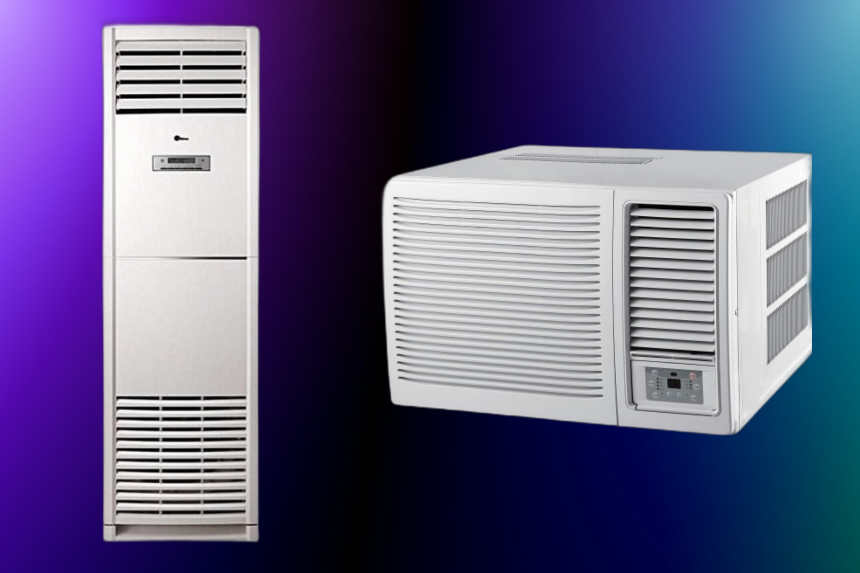Window Split Type Air Conditioner एयर कंडीशन का हमारे जिंदगी में बहुत बढ़ा महत्वपूर्ण रोल है। इस के बिना हमें रहना आज की इस वातावरण में बहुत दिक्कत होता है।और जब गर्मियों का मौसम आता है तो इस Air- conditioner एयर कंडीशन का जरूरत बढ़ जाता है। आज कल हर रहने वाली जगह। चाहे वो घर, ऑफिस या किसी तरह का फैक्टरी या स्कूल कॉलेज अस्पताल या कारखाना हो। लगभग हर जगह AC एयर कंडीशन का इस्तेमाल होता है और चार पहियों वाली गाड़ियों, हवाई जहाज, ट्रेन में भी AC का इस्तेमाल होता है।
घरों में लगाए जाने वाला AC
इसमें पाए जाने वाली हर तरह का Company, Designs, Capacity और Features कंपनियां ने इस मे निकाल कर रखी है। हर तरह का कीमत भी मौजूद है। AC Split Window type, Cassette type, potable type, Inverter type,Non-inverter type और दीगर तरीकों का AC लगाया जाता है। घरों में ज्यादातर लगाए जाने वाली AC Capacity 1.0 ton,1.5 ton, 2.0 ton. 2.5 ton होता है।

AC खरीदने के लिए
बाज़ारों में। बहुत सारे दुकान और ऑनलाइन भी खरीदा जा सकता है। ऑनलाइन के लिए। Amazon, Flipkart जैसी प्लैटफॉर्म से खरीदा जा सकता है। इसमें बहुत सारी डिस्काउंट होता है ऑफर के माध्यम से।
Frequently Asked Questions for Window Split Type Air Conditioner [2024]
1. Q. What is an Air Conditioner Split Window?
- An Air Conditioner Split Window refers to a type of air conditioning unit that combines features of both split and window air conditioners. It typically consists of two main units: an indoor unit installed inside the room and an outdoor unit placed outside the building. However, unlike traditional split systems where the indoor unit is mounted on the wall, in a split window AC, the indoor unit is designed to fit partially into the window space.
2. Q. How does an Air Conditioner Split Window work?
- The indoor unit of an Air Conditioner Split Window contains the evaporator coil, blower fan, and air filter. It draws in warm air from the room, passes it over the evaporator coil where it is cooled and dehumidified, and then blows the cooled air back into the room. The outdoor unit houses the compressor, condenser coil, and fan, which dissipate the heat extracted from the indoor air to the outside environment.
3. Q. What are the advantages of an Air Conditioner Split Window over traditional window units?
- Air Conditioner Split Window units offer several advantages over traditional window units, including quieter operation, better energy efficiency, improved aesthetics (since the compressor unit is located outside), and the ability to cool larger areas more effectively.
4. Q. Can I install an Air Conditioner Split Window by myself?
- While it is possible to install some window AC units without professional help, installing an Air Conditioner Split Window typically requires professional installation due to the complexity of mounting both the indoor and outdoor units, as well as connecting refrigerant lines and electrical wiring.
5. Q. How do I maintain an Air Conditioner Split Window?
- Regular maintenance is essential to ensure optimal performance and longevity of an Air Conditioner Split Window. This includes cleaning or replacing the air filter regularly, inspecting and cleaning the evaporator and condenser coils, checking refrigerant levels, and ensuring proper airflow around the outdoor unit.
6. Q. Can an Air Conditioner Split Window be used for both cooling and heating?
- Some models of Air Conditioner Split Window units come with a heat pump function, allowing them to provide both cooling and heating capabilities. However, not all models offer this feature, so it’s essential to check the specifications before purchasing.
7. Q. What should I consider before buying an Air Conditioner Split Window?
- Factors to consider before buying an Air Conditioner Split Window include the size and layout of the room you want to cool, the energy efficiency rating of the unit, the noise level of the indoor and outdoor units, additional features such as programmable thermostat or remote control, and the availability of professional installation services in your area.
8. Q. Can an Air Conditioner Split Window be used in all climates?
- Air Conditioner Split Window units are suitable for use in most climates, but their effectiveness may vary depending on factors such as outdoor temperature and humidity levels. In extremely hot or humid climates, you may need a unit with higher cooling capacity or additional features such as dehumidification mode.








